What is Conversion Rate Optimization?
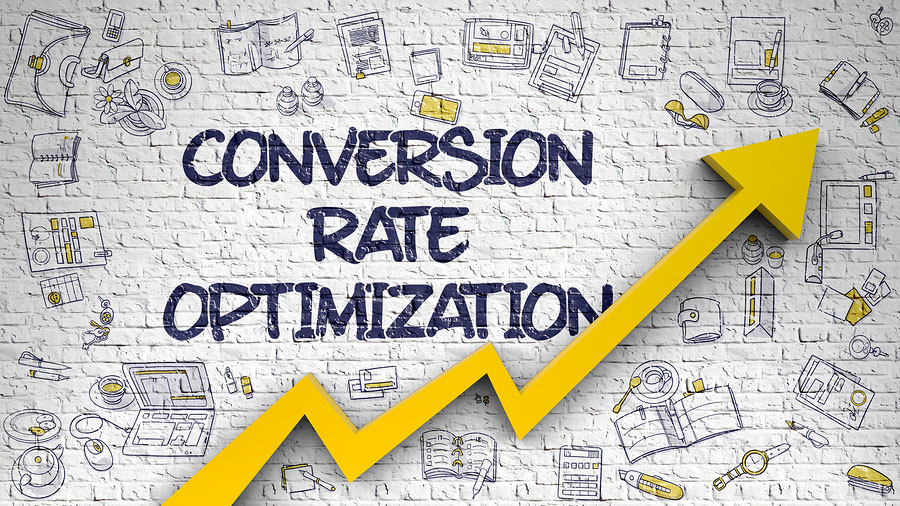
Conversion rate optimization (CRO) is a powerful way to improve the average conversion rate of an online business. It involves systematically enhancing critical elements of your website to increase Denver SEO and the number of visitors who complete desired actions. The primary purpose is to maximize the percentage of visitors that complete activities such as purchasing products, subscribing to newsletters, and filling out forms. Through testing and experimentation, CRO helps to identify which areas need optimizing and provides actionable insights on how to do so.
Conversion rate optimization is an ongoing process — it requires continual optimization and testing to ensure your visitors have positive interactions with your brand throughout their journey. A successful CRO strategy must address all aspects of the customer journey, from initial awareness through purchase and continued engagement. This includes everything from ad copy and landing pages to product descriptions, website design, checkout processes, customer support methods, and overall user experience. By leveraging data collection tools such as heatmaps and A/B testing, you can discover what’s causing users to bounce off your page or abandon their carts at any given point in the funnel. From there, you can get creative by making small changes based on user experience and feedback or trends in data sets.
Conversion Rates
Every industry has a different conversion funnel, the most important benchmark. For example, dating websites rank the lowest at 2.75%, while finance/insurance converts the highest at an average of 7.19%. Over all industries, the average AdWords conversion rate is 2.7%, and the average Google Display Network conversion rate is 0.89%.
However, pay little attention to averages. Your business is unique and can convert at a much higher rate. Even a website that is currently converting fairly well can continually be improved. The only conversion rate that matters is “better than the last one.”
Bounce Rate
Bounce rate is an essential measure of website performance as it tells us how many visitors have landed on our store pages and then quickly left without going further into the site. A high bounce rate indicates that people aren’t finding what they need in your store, leaving after viewing a single page. This can be a sign that the content on the page doesn’t match their needs or expectations or that the page design is not using best practices to encourage users to explore your site further.
The key to reducing bounce rates is providing quality content matching user needs and expectations. Content should be engaging, compelling, and well-written, with a clear call to action. Additionally, usability enhancements such as easy-to-navigate menus, intuitive layouts, and relevant internal linking will help redirect users throughout your website and potentially lead them to become customers.
Use the Right Keywords
There are browsers, and there are buyers. People searching for a specific item or service search with exact long-tail keywords. For example, someone thinking about getting a new pair of running shoes might search on “running shoes,” but someone ready to buy right now could search “running shoe men size 11 wide.” Long tail keywords to motivate visitors to take action today. These are the keywords to optimize and bid on.
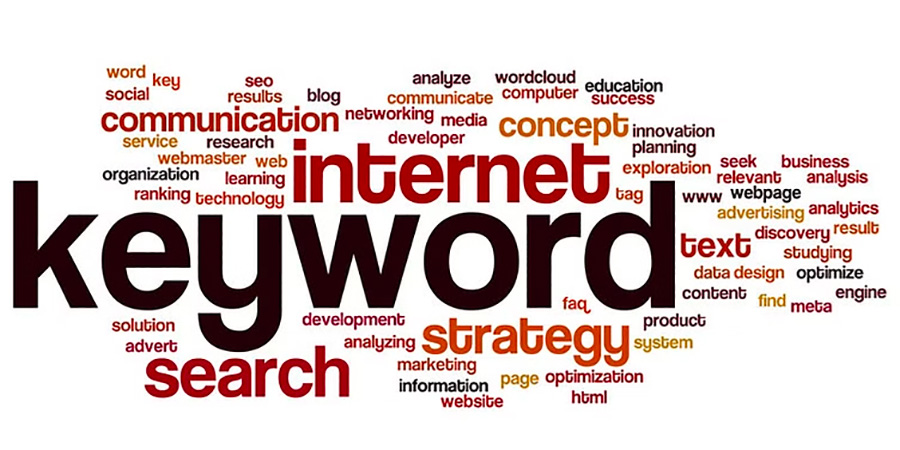
Identify your target demographic.
What makes a keyword the “right” keyword is that it is selected to attract a specific group of potential customers. For example, the best target demographic for HVAC businesses is baby boomers aged 55-64. A local company often wants location-specific keywords. Identify where the current business is coming from and other markets to expand into. Analyze the traffic data to target the website, ad copy, and keywords for the best prospects.
Optimizing Landing Pages
There are some books about optimizing landing pages to improve conversion rates; that’s the whole point of a landing page. One of the most critical points is that conversion is tightly linked to using the right keywords. The visitor arrived on the page because they typed a specific search engine term. If the page does not immediately appear to offer the answer they’re looking for, they’ll abandon the page, and the lead or sale will go to a competitor.
Many different factors could influence conversions on a landing page, including:
- Clean, attractive design: Clutter conveys the opposite of professionalism and trustworthiness, implying a lack of concern and sloppiness. The design on all pages should remain consistent with the brand, presenting a unified user experience to the visitor.
- A striking, compelling headline: Take the time to create an exciting headline relevant to your keyword and compels prospects to remain on the page. For example, headlines including numbers (Top 5, 3 Best) can do well.
- Straightforward, concise content: Communicate the offering as clearly as possible, addressing the keywords linked to that demographic or ad group.
- Identifying top sellers: Marking an item as the “Best Seller” or “Most Popular” can increase conversions.
- Eye-catching call-to-action (CTA) button: Ensure that the CTA button is attention-grabbing, uses focused text that offers a benefit (such as “Yes, I want …), and seems “clickable.”
- Placing a “click trigger” near the CTA button: Click triggers could include “free shipping,” a key benefit, or a “money-back guarantee.” The intent is to increase the comfort level of the decision-maker.
- Simplified, easy-to-use capture form: Don’t overwhelm visitors by requesting too much information. Only ask for the information that is essential.
A/B Testing is Essential
Even experts can be surprised by the results of A/B testing. Sometimes an “improved” page won’t test as well as the original. Sometimes a simple change to a title or button can produce a dramatic improvement. Even pages producing well can experience an unexplained decline in conversions (unfortunately, that’s much more common than an unexplained increase). The point is that there’s no way to know what works and what doesn’t without testing, a never-ending process.
Turning traffic into sales can take a lot of work, but improving your Conversion Rate Optimization in Denver is worth the time and effort. Expert assistance can identify website problems and make precise, targeted changes that will compel visitors to take action. The future of your business could depend upon it.
How To Use Conversion Rate Optimization Tools
When you consider ways to optimize your website or product conversion rates, the best tool you have at your disposal is free – your brain. Utilizing data and feedback gathered via customer interviews and surveys, observing user behavior through analytics tools and usability testing, and critically analyzing a resource’s pain points can help identify improvement areas. By actively listening and carefully studying the user experience with the website or product, organizations can understand the assumptions made while creating it, draw conclusions based on this data, and make necessary changes to increase conversions.
Your potential customers know better what they need from using a product or website. There is incredible value in listening and interacting with them directly. Included in customer feedback may be grievances about flow which gives teams insight into potential underlying usability issues that are easier to uncover with direct input from users. Using inquiry methods along with A/B testing can also be beneficial in understanding customer behaviors and leading to informed decisions throughout development processes, improving the website or product conversion rates over time.
Calculating Conversion Rates
The conversion rate is an essential metric for any website or online marketing campaign. It helps track the success of those efforts and provides insight into what kind of return on investment (ROI) can be expected. These rates can be calculated by dividing the number of conversions by the number of website visitors, then multiplying that result by 100 to get your percentages. For example, if your web page had 25 sales and 500 visitors last month, you would calculate your conversion rate as 25 divided by 500 (0.055), multiplied by 100 5.5%.
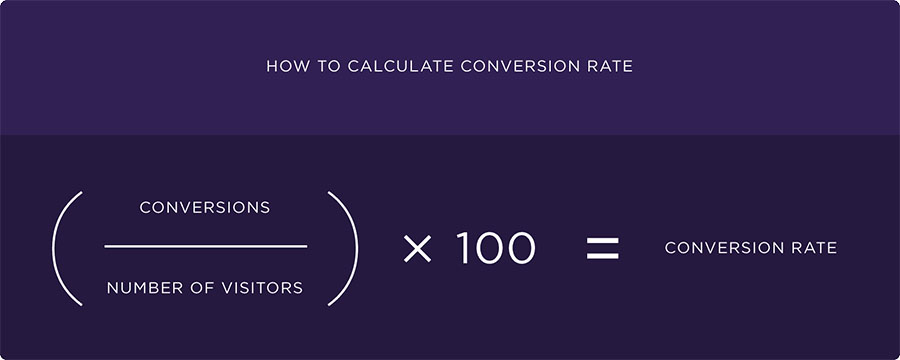
Measuring and tracking your conversion rate over time can help you identify areas where improvement is needed, such as optimizing content to maximize the effectiveness of a specific call-to-action (CTA). Additionally, monitoring which channels generate converting actions and serve up more successful campaigns can provide data-driven insights into which channels produce the best results and bring higher-quality leads. By understanding our conversions, we can continue to adjust strategies across multiple channels to ensure maximum ROI from our efforts.
How to Track Conversion Rate?
Tracking conversion rate is an essential step in any successful marketing plan. By tracking your conversion rate, you can determine which strategies are practical and identify areas where your efforts may fall short. The great thing about doing this is that it allows you to change your approach and improve your results over time.
Google Analytics is one of the most popular tools for tracking conversion rates as it allows you to set up a funnel, segmenting your visitors on different stages of their buyer’s journey. This way, you can follow them through the sales pipeline and analyze the relative success of each step until they make a successful purchase. Setting up a funnel in Google Analytics is relatively straightforward — go to Admin → Segments → New Segments → Sequences. Once done, it will provide detailed insights into how well each stage performs so that any changes made can be tracked and compared instantly. Additionally, by utilizing segments in Google Analytics, you can differentiate between first-time purchasers and returning customers, helping you track where loyalty comes from and evaluate the relevance of offers targeted at specific segments.
Using Google Analytics
Google Analytics provides a comprehensive set of tools and insights to help optimize average conversion rates. Using Google Analytics, it’s possible to set up virtual page views for any instance when there is no URL change between two steps, like when a pop-up appears on the page. By diving deep into Google documentation, users can learn how to create and utilize funnels as a way to increase website performance.
However, optimizing your current conversion rates is more than just gathering data – it takes strategic calculation and testing. That’s why it’s important to approach both pre-sale optimization and post-sale optimization objectives separately. Before making a purchase, customers expect certain features or benefits tied to the item they are buying; by creating conversions leading up to the sale, businesses can increase their chances that users will invest in their product or service. Post-sale objectives involve using customer feedback methods such as surveys or reviews so companies can acquire valuable improvements that increase future sales efficiency. Leveraging these tips will help make an online presence stronger and provide optimized results through Google Analytics platforms.
Click-Through Rate (CTR)
Click-through rate (CTR) is an essential measure of the effectiveness of online advertising and email campaigns. It is calculated by dividing the number of users who click a link to your website, either from an ad or email, by the total number of views. A high CTR indicates that your ads and emails resonate with audiences, while a low CTR means that something may be wrong with your messaging or creative strategy.
CTR optimization aims to maximize the ratio of clicks to views or impressions. This means targeting the right audience in order to increase the chances of your ad/email being clicked on, as well as using quality visuals and engaging copy. Optimizing for AdWords specifically entails running different bidding strategies such as cost-per-click or cost-per-view, using remarketing opportunities, testing keywords and audiences, understanding Quality Scores, and more.
Meanwhile, email marketing efforts often center on refining subject lines and segmentation in order to boost engagement from targeted audiences. The ultimate goal is continually increasing click-through rates so more people visit your website and take action – whether it’s making a purchase, downloading content, signing up for a newsletter, or even engaging on social media.
Session Duration
Average session duration is an important metric when considering user engagement on a website. It gives you a picture of the general amount of time visitors are spending on your site and can be used to identify trends and optimize user paths to increase engagement.
Having a high average session duration means that visitors are spending more time interacting with your content – whether that be watching videos, consuming blog posts, or browsing through product listings. This gives them more opportunities to convert into customers, drives better search rankings, and makes sure they come back again in the future.
However, if the average session duration is low, then it’s likely due to a poor user experience. Low session durations often mean users are bouncing off pages quickly, which suggests there’s something wrong with the design, presentation, or perhaps even the content itself. By identifying this early, you can address any potential issues before they spiral out of control and adversely affect your website’s performance.
Pages per Session and Average Page Depth
Average page depth is an engagement metric that can often be seen in website analytics. It measures the average number of pages a potential shopper visits during a single-session visit. This metric gives insight into how successful your website is at engaging potential customers, as higher page depth means more time spent onsite.
For online stores and services, tracking this metric can be invaluable for understanding how shoppers interact with their products and services. If there are many views per session but no conversions, then it may indicate the need to improve the clarity of your conversion funnel or optimize your overall user experience. Moreover, if someone stays on a product page or other informative page viewed multiple times, it’s possible they are still interested but not yet ready to purchase. Understanding these scenarios can lead to improved order fulfillment rates and increased customer retention rates.
CRO Tools
Hot Jar
HotJar is a valuable resource for gaining insight into how your website visitors interact with your site. Through detailed heatmaps, you can track user clicks, cursor movement, and scroll-depth to identify patterns in user behavior. The mapping process reveals invaluable information, such as areas of interest and potential distractions within the page design. HotJar’s proprietary tools also provide additional benefits like live session playback, so you can watch your users engage in real-time, giving you a deeper understanding of what they’re taking away from their experience on your website.
On top of all this, HotJar provides attribute filters allowing you to segment your data based on visit duration, page views, country, and devices. This level of customization helps businesses zero in on the exact type of target market they want to cater to. As such, HotJar is a valuable tool that allows more visibility than ever before into their core customer demographic and how best to reach them.
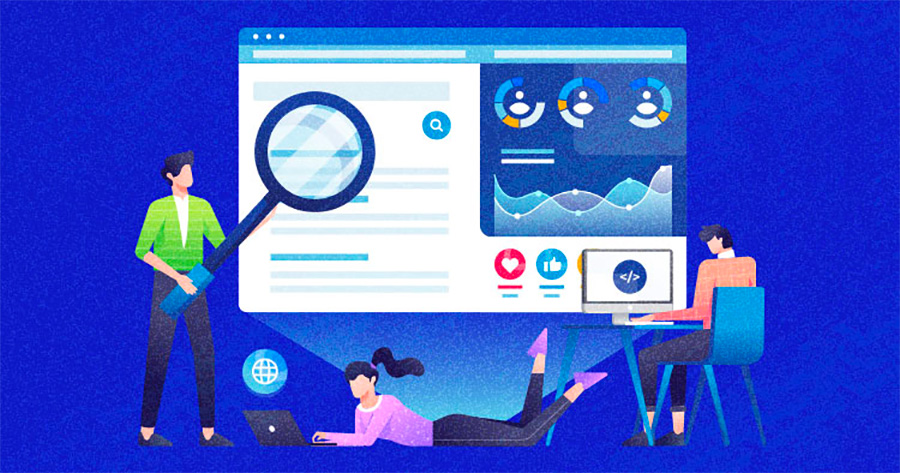
Quantcast
Quantcast Measure has quickly become a popular tool for user analytics and marketing teams due to its unique capabilities. As an alternative to traditional Google Analytics, Quantcast provides per-click insights into who is actually visiting a website with in-depth demographic data. This innovative tag-based system captures very personal information related to web visitors, generating comprehensive business intelligence that can be used to tailor messaging and imagery accordingly. Additionally, users have the ability to view metrics based on composition and indexed levels compared to other websites within their country.
Businesses of all sizes are beginning to benefit from the comprehensive data provided by Quantcast Measure when analyzing website usage, allowing them to gain valuable insight into the segments of visitors they are reaching. By drilling down further into these demographics, marketers can create campaigns that better resonate with their target audiences and generate ROI quicker than ever before. With this powerful tool’s offerings becoming increasingly beneficial for user analytics worldwide, it’s no surprise that its popularity will continue growing amongst creative teams and marketing professionals.
Optimization Tips
Page loading time is a crucial factor that must be taken into consideration for any successful conversion rate optimization (CRO) strategy. Even a marginal dip in page load times can significantly affect the user experience, leading to a higher bounce rate. Research has shown that 40% of visitors will abandon a website if it takes more than three seconds to load. This clearly conveys the potential impact sluggish page speeds have on prospective customers who are willing to make a purchase or convert.
Amazon reported an exciting finding where they discovered that 100 milliseconds of latency in load time reduced sales by 1%. This statistic speaks volumes about the importance of page loading speed in terms of CRO initiatives. Reducing the loading time of your website pages ensures users can access your content and products quickly, allowing them to complete their purchasing journey without interruption more easily. If you want to optimize your current conversion rates, start by making sure your website loads as fast as possible with no latency issues hindering performance.
Page Speed
Whether you are launching a new website or improving an existing one, reducing loading speed should always be among your top priorities. That is why it is so essential to understand the various techniques that can help you in this regard.
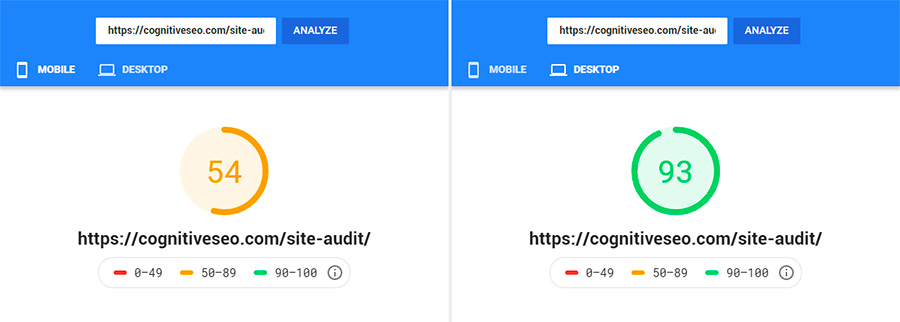
One of the most valuable resources in this process is Google’s Think with Google page dedicated to helping website owners understand how to optimize their websites for better performance. One key factor to look out for here is the use of performance testing tools like Pingdom Tools, GTmetrix, and Google PageSpeed Insights to analyze your site’s speed. Additionally, utilizing a lightweight theme can help ensure smoother loading times – as will removing any unused/ unnecessary plugins from your site. Using optimized WooCommerce hosting can also make a huge difference in speeding up load times for your customers. Finally, pay attention to reducing file sizes of images and videos used on the site; compressing them can significantly improve speed times without compromising quality or customer experience.
Provide a Fast Checkout
The checkout funnel is an essential part of any eCommerce business. It consists of the steps that lead a customer from browsing products to completing a purchase. With the proliferation of online stores, streamlining the checkout funnel is now more critical than ever for increasing sales and conversion rates.
Shortening the checkout funnel helps to reduce losing potential customers due to checkout drift or providing too many steps during the process. Simplifying the process helps make it faster and easier to convert visitors into customers, resulting in increased conversions and, ultimately, greater profits. This can be done by removing unnecessary fields, offering a variety of payment options, or providing incentives like discounts or free shipping when available.
Ensuring that your shopping cart process works well on both desktop and mobile devices will help ensure customers have a smooth experience when navigating through your website. In short, optimizing your checkout funnel gives you a better chance of proving successful for any online business.
Long, complicated checkout funnels can be an absolute nightmare for online shoppers, as they take away the convenience of making a quick purchase. From asking users to register on your site, sign up for newsletters, and have them read through detailed product information and policies, these steps can drag out the entire process and make it highly unappealing to potential customers. Moreover, the whole ordeal of going through such complex checkouts is draining; most shoppers would abandon the cart and leave without making any purchase.
Add Customer Testimonials
Customer reviews are an invaluable source of reassurance for potential customers. Having feedback from other buyers directly available can help inform and convince users to make better decisions, ultimately leading to more sales. Not only does it provide impartial insights into a product’s merit, but it also builds credibility for the seller. Amazon is an excellent example of how integrating customer reviews can dramatically affect eCommerce success; its customer review model has become so compelling that people often refer to it even when they shop offline!
There are numerous advantages of having customer reviews integrated into your product pages. Reviews act as social proof, providing potential customers with more value that motivates them to purchase your products or services. Furthermore, they allow potential customers to interact with you directly, allowing you to respond and address any possible negative experiences quickly and efficiently. Ultimately, this leads to increased conversions and higher customer satisfaction ratings across the board.
Integrate Sales Promotions
Sales promotions are a great way to entice customers and drive business growth. We live in a consumer-centric world where everyone is looking for bargains. To stand out, businesses need to offer special incentives to their customers for certain activities. For example, coupons, discounts, special offers, and promotional campaigns can effectively drive loyalty and increase sales.
For businesses like AliExpress that understand the power of promotions, running creative sales promotions can help increase brand awareness and capture customer attention. Through offering introductory deals, limited-time discounts, or exclusive savings on specific products or services, strategic promotions allow customers to save money while also helping increase overall company sales figures.
Not only does this lead to increased sales, but it also generates customer loyalty, with repeat purchases being more likely as customers continue to get interested in the products offered by AliExpress. Furthermore, offering attractive promotions through online platforms like websites or social media will help engage potential customers who otherwise may have yet to be exposed to these offers. With clever use of promotional tactics like these, companies can build their customer base while increasing business success in the long run.
Product Scarcity
The scarcity effect is a powerful marketing tool that has been used by companies for centuries to drive sales and create demand. This tactic relies on creating a feeling of urgency and a heightened sense of need in the customer’s mind due to the short supply of a product or service. Suggesting a limited amount of available items naturally piques interest and entices customers to make an immediate purchase before the offer runs out.
In e-commerce, this phenomenon can be seen in action. Stores will oftentimes feature stock count display systems that showcase how much of each item remains available for purchase, along with other pertinent information like discounts or pricing details. By making customers aware of the limited quantity left, they encourage swift decision-making, which increases sales and profits. Additionally, there are other ways in which e-commerce stores leverage this mechanism, such as flash sales with strictly enforced time limits or exclusive offers presented only to select customers as tools to boost customer engagement.
In Closing
Conversion rate optimization is a cornerstone of any successful online business. By improving the customer experience, companies can turn more visitors into paying customers and ensure their website takes full advantage of its traffic. While there are many strategies and tactics available to improve a website’s conversion rate, the key takeaway here is that it’s essential to continually test different aspects of your website to make necessary improvements so that it performs better and attracts better more leads that convert.
These are the top best practices for improving website conversion rates. From setting up easy-to-find calls to action on your page, testing different variations on offer landing pages, tailoring browser notifications for time-sensitive offers, or creating personalized emails for specific user segments — these are all invaluable methods for boosting conversions on any business website. It’s essential always to be open to new ideas and suggestions from customers as those can help guide you in further driving up your conversion rate.

